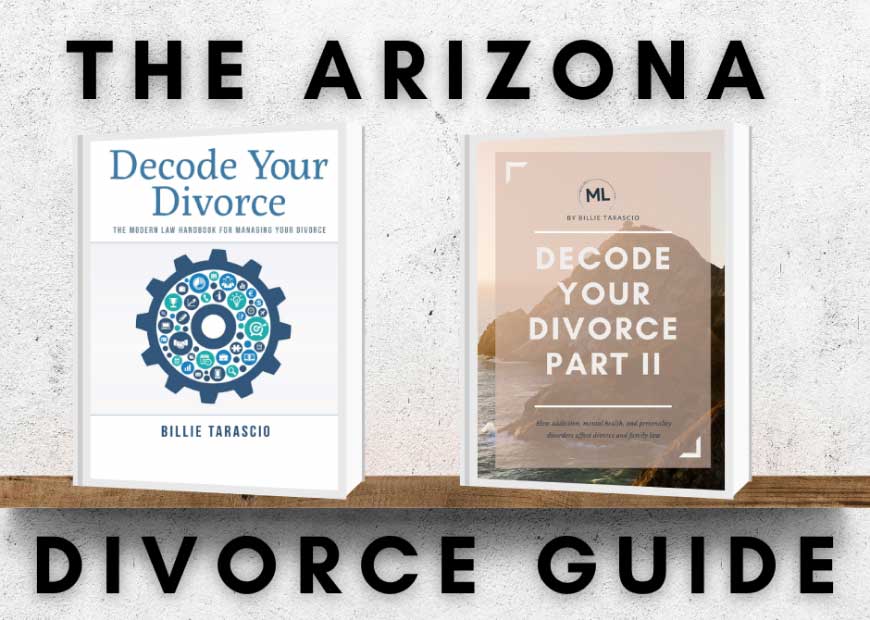You began preparing for trial back at step one when you determined your objectives. You continued preparing for trial when you outlined which issues applied to you and when you took the time to identify the evidence (documents and witnesses) that would assist you in proving your case. Now is where the legal analysis gets important.
The 10 Steps: Trial Preparation and Trial
Most often, you will have already filed your initial paperwork, responded, appeared for a temporary orders hearing and/or an RMC. Most often, you will have attended a parenting conference or met with some other court-appointed third-party provider, and you would have attended court-ordered Alternative Dispute Resolution (ADR) or mediation. Following the mediation, you probably had a telephonic or in-person status conference with the judge to determine if any agreements had been reached. If you are here, you either did not reach any agreements or you have some, but not all, outstanding issues you intend to lay before a judge.
The best trial preparation begins many months before trial, but most often, a hearing will be set within three months of the status conference. It is time to make strategic decisions, get organized, and execute your strategy.
- Identify which broad legal issues are remaining.
- Identify the actual law (from the Arizona Revised Statutes) that applies to the legal issues.
- Drill down to determine the elements of each legal issue.
- Identify the facts from your case that apply to each legal element.
- Identify the evidence to support the facts for each element of each legal issue.
- Finalize your exhibit and witness lists and disclose any items or witnesses that have not been disclosed.
- Draft your pretrial statement.
- Prepare your testimony.
- Present your case.
- Review your decree.
We will look at each of these 10 steps in detail as applied to a hypothetical case.
- Identify which broad legal issues are remaining.
You started off with a divorce case with issues that included property division, child support, spousal maintenance, custody, attorney’s fees, valuing a business, separate property, and hidden money or waste. By applying our negotiation tactics and attending the court-ordered ADR, you have settled all of the issues except spousal maintenance.
In our example case, you will need to prepare to litigate the issue of spousal maintenance.
- Identify the actual law (from the Arizona Revised Statutes) that applies to the legal issue.
With the only remaining issue identified as spousal maintenance, you go to the Arizona Revised Statutes (or the chapter on spousal maintenance) to determine the specific language of the law, A.R.S. 25-319 (do look to the law because it is possible that the language or factors may have changed since this article was published).
- Drill down to determine the elements of each legal issue.
To establish a legally binding contract, a person must show there was a valid offer, acceptance of that offer, and consideration that was paid for the contract. The offer, acceptance and consideration are the three elements that must be proven. Likewise, in family law, each law has factors, elements or considerations that make up the law. For each issue, we must identify the corresponding elements.
We know based on the language of the law that spousal maintenance is a two-step analysis and that the person seeking maintenance must qualify (and has the burden of showing they qualify) for maintenance before the court will apply step 2 to determine the amount and duration of maintenance.
The spouse seeking maintenance must show he or she qualifies by documenting any one of the following:
- Property, including property received in the divorce, is insufficient to provide for his or her reasonable needs;
- the spouse is unable to be self-sufficient through appropriate work, or lacks enough earning ability in the labor market to be self-sufficient, or takes care of a child whose age or condition requires the spouse to not work outside the home;
- the spouse contributed to the educational or career opportunities of the other spouse; or
- the marriage was for long duration and the spouse is of an age that prevents them from employment adequate to be self-sufficient.
Once the court finds the spouse seeking maintenance has established one or more of the above qualifiers, the court must consider the following factors in order to decide how much spousal maintenance to award, and how long it should last.
From the language of the statute, we know that the court will consider:
- Standard of living established during the marriage.
- Duration of the marriage.
- Age, employment history, earning ability, and physical and emotional condition of the spouse seeking maintenance.
- Ability of the spouse requested to pay to meet his or her own needs while paying maintenance.
- Comparative financial resources of the spouses, including their comparative earning abilities in the labor market.
- Contribution of the spouse seeking maintenance to the earning ability of the other spouse.
- Extent to which the maintenance-seeking spouse reduced his or her income or career opportunities for the benefit of the other spouse.
- Ability of both parties after the dissolution to contribute to the future educational costs of their mutual children.
- Financial resources of the party seeking maintenance, including marital property awarded in the divorce, and that spouse’s ability to meet his or her own needs independently.
- Time necessary to acquire sufficient education or training so that the maintenance-seeking spouse may find appropriate employment, and whether such education or training is readily available.
- Excessive or abnormal expenditures, destruction, concealment or fraudulent disposition of community, joint tenancy and other property held in common.
- Cost for the maintenance-seeking spouse to obtain health insurance and the reduction in the cost of health insurance for the spouse from whom maintenance is sought, if the latter is able to convert family health insurance to employee health insurance after the marriage is dissolved.
- All actual damages and judgments from conduct that results in criminal conviction of either spouse in which the other spouse or child was the victim.
- Identify the facts from your case that applies to each legal element.
This can be one of the hardest steps for people who are representing themselves. You are being asked to look at your whole life, everything that has ever happened, all the complexities of you and your family and determine “the facts” relevant to the elements!
In our hypothetical case the relevant facts are:
Husband and Wife are both in their early fifties. Husband works as an engineer for Intel. Wife worked minimally throughout the 30-year marriage and raised the parties’ three children. She has a bachelor’s degree with very little work experience. The parties’ total community value is just under $1 million, which includes a house and retirement funds.
- Property, including property received in the divorce, is insufficient to provide for his or her reasonable needs;
- the spouse is unable to be self-sufficient through appropriate work, or lacks enough earning ability in the labor market to be self-sufficient, or takes care of a child whose age or condition requires the spouse to not work outside the home;
- the spouse contributed to the educational or career opportunities of the other spouse; or
- the marriage was for long duration and the spouse is of an age that prevents them from employment adequate to be self-sufficient.
A legal analysis and application of facts looks like this:
Based on these facts, Wife has insufficient property to provide for her needs, because after she receives her portion of the community property, there will not be sufficient income from that property to support her. The asset value of the home and retirement funds are tied up until either the sale of the home or her retirement. Even then, it will be insufficient to provide for her on a long-term basis.
Further, Wife is unable to be self-sufficient under factor two because she is not employed full-time and has only worked minimally throughout the marriage for the last 30 years. She cannot immediately enter the labor market and command employment that would allow her to be self-sufficient.
Additionally, Wife supported Husband’s career by taking the majority of the child-rearing duties and maintaining the household while Husband traveled, worked late and enjoyed the flexibility in his career that he would not have had if Wife wasn’t taking care of the home and children.
Under factor four, Wife has been married for more than 30 years, so the parties have a marriage of long duration. Whether she is of an age that precludes her from becoming self-sufficient isn’t clear.
In this case, Wife qualifies for spousal maintenance under factors one, two, three and possibly four. The court should then analyze step 2 to determine the amount and duration of maintenance.
- Identify the evidence to support the facts for each element of each legal issue.
Wife must prove:
- Age
- duration of marriage
- her work history
- Husband’s work history
- How Wife supported Husband’s career
- total value of the community property and the nature of the property
- future earning capacity
Wife’s testimony will establish most of the relevant facts, and many will not be in dispute; the couple already established the nature and value of the property via settlement. Wife may also want to show a résumé with her complete work history and she may want to hire an expert witness to testify as to her future earning capacity. She may have a journal or calendar she wants to use to show how she supported her husband’s career. Under this step, Wife should list the items and witnesses she will use to prove she qualifies for maintenance. Husband should gather any contrary evidence. For instance, if Wife worked minimally during the marriage as a physician, Husband will want to produce evidence of available positions for physicians, her license, and what she could earn as a physician.
The same analysis should be done for the second set of spousal maintenance factors to determine amount and duration.
- Finalize your exhibit and witness lists and disclose any items or witnesses that have not been disclosed.
Make a list of each item and each witness that you may call. It is better to disclose any item or witness that you don’t think you will need than to be prevented from calling the witness or introducing the evidence at a later time. Look back at your disclosure statements to ensure everything and everyone has been disclosed.
- Draft your pretrial statement.
Your pretrial statement is the most important document in your entire case. The pretrial statement contains all of the jurisdictional information, all of the uncontested facts of the case, the procedural history, outstanding issues, positions and legal analysis. Most judges prefer a joint pretrial statement, which means your positions and legal analysis are listed in the same document as your spouse’s. The pretrial will contain a list of exhibits, witnesses, objections to the opposing party’s exhibits or witnesses, and an inventory of your property and debts.
Follow a template to draft your pretrial statement using Access Legal or another form or template for the county you are in. If you can get the assistance of an attorney with only one item, let this be the item. Many times, a judge forms their decision based on this document prior to you ever setting foot in the courtroom.
You will also use the pretrial statement as your outline for trial presentation. You already listed out the relevant facts to each element; in trial, you will need a witness or exhibit to testify as to each relevant fact in order to support your claims.
- Prepare your testimony
Once the pretrial statement is drafted and filed with the court, you can prepare your testimony and the testimony of any other witnesses you are calling. Use the pretrial statement as a guide for the facts you need to get into evidence, and design your questions to elicit the response you want.
Practice telling your story, with all of the relevant facts, in a calm and clear manner.
You want your pretrial to tell a story and present both a legal and factual theory consistent with that story. If you can, find someone who has a legal background and who is relatively unfamiliar with the case. Go through your testimony and then ask them what they thought or if they were unclear about any particular statements you made.
You must also prepare yourself to be cross-examined and to cross-examine the opposing party and other witnesses. More on that next.
- Present your case.
On the day of your court case, you will be nervous. Try to get a good night’s sleep beforehand. Eat good food and don’t go into court hyped up on caffeine. Some people take anti-anxiety medicine before going to court and swear it helps. Just don’t try it for the first time on the day of your hearing. You don’t want to risk being drowsy in front of the judge.
In family court, opening statements are not typically presented and the pretrial statement takes the place of your opening statement. The Petitioner will present his or her case first.
First, you will be sworn in. If you do not have an attorney, you may testify from the counsel table or you may come to the witness box. Then you will offer statements of fact that support your legal positions. One of the biggest mistakes people make is testifying as to their feelings, conclusions or assumptions. You will want to practice before court as to how you will convey to the judge the FACTS that support your conclusions.
For instance, you want to testify that “He is such a bad father.” This will not go over well at all. You may think this is a fact, but it is your opinion; your statements must be based on facts. Instead, you should say: “He drinks alcohol on a daily basis and fails to feed the children dinner. Father calls me each evening drunk with slurred words after having admitted to drinking 12 beers. He doesn’t supervise homework and the children are late to school when with Father. Exhibit 2 shows the children’s tardy records and you will see that on Tuesday-Thursday, when the children are with Father, they are tardy 75% of the time. Additionally, the child care records, marked as exhibit 4, show that Father checks the children in at 6:30 a.m. and picks them up after 6:00 p.m. 85% of the time that he has the children.”
Do you see the difference? The other thing you can do to help the judge is to state before you testify which issue and element you will be addressing. For instance, you can say:
“Your honor, I want to offer testimony on what is in the best interest of the child, specifically with regards to Mother’s mental health. Mother has struggled with mental illness for the last 10 years. Exhibit 12 shows her mental health records and that she was diagnosed with agoraphobia. She has extreme levels of anxiety, doesn’t drive or have a license, and won’t leave the house for days at a time. Her mental health status affects the best interest of our daughter because Mom is unable to take her to school, doctors appointments, or extracurricular activities due to her mental illness.”
When referencing exhibits, you have two options. You can agree in advance (stipulate) which exhibits will be admitted. This is the simplest, fastest way to use exhibits. This requires that you and the opposing party agree in advance not to object to exhibits. Keep in mind that the only valid objections to exhibits are that they are not relevant, they were not disclosed, they are prejudicial to the point where the prejudice outweighs the value of the exhibit, or they are duplicative. The second way to get an exhibit admitted is to “offer to admit” the exhibit. The opposing party has the opportunity to object based on the objections laid out above. If you do not offer to admit the exhibits, the judge cannot look at your exhibit.
Offer your testimony in a detailed, specific and organized fashion, walking the judge through the issues you are addressing one at a time. When you are done testifying, the opposing party will have the opportunity to cross-examine you.
When conducting cross-examination, the general rule is that you should not ask a question of the witness when you do not know the answer. A good cross-examination asks leading questions where you are actually doing most of the examination. A good cross might be something like this:
“Father, isn’t it true that when Mother receives treatment for agoraphobia her symptoms disappear completely? And isn’t it true that in the 10 years you have been married you have left the state on business trips approximately 30% of the time? Isn’t it true that during that time Mother has always gotten the children to school and doctors visits? I’m showing you what has been marked as exhibit 15. Can you identify exhibit 15? These are medical records of your daughter showing Mother took your daughter to the doctor, correct? And isn’t it true that maternal grandmother lives with Mother and provides any and all of the necessary transportation?”
After cross-examination, the moving party (party offering evidence) can “redirect.” That means you may offer testimony or ask questions regarding anything brought up during cross-examination. After redirect, you can call any other witnesses and proceed in the same fashion. The judge may interject and ask questions too. After the Petitioner has “rested” their case, the Respondent has the same opportunity to present evidence.
Judges keep a close eye on the clock to make sure that each party uses only half of the time allotted for trial. We almost always run out of time and wish we had more time to present our evidence. We also always feel discombobulated. We plan for an organized and perfect presentation of evidence, but it never goes as planned. The better prepared you are, the better you will feel, but plan to be flexible. There are almost always surprises.
Courtrooms are some of the most formal environments in our society today, more formal than most churches or fine dining restaurants. Judges expect that you will know and understand courtroom etiquette, but rarely are people given instructions on what is expected.
- Be on time.
- You need to be dressed formally and appropriately.
- Pants or skirts that are no shorter than 2 inches above the knee (no shorts)
- Collared shirts for men – no T-shirts
- No blue jeans – or your very best pair of jeans if you cannot find slacks – no holes
- For women – no cleavage
- Stand up when the judge enters the courtroom and sit down only after they have done so.
- Be polite to the staff, bailiff, opposing parties, and others in the courtroom.
- Speak more formally than you might otherwise be inclined to do. For instance, instead of saying “yeah” or “uh-huh” say “Yes, Judge.”
- Treat the judge with flawless deference.
- Address the judge only when the judge invites you to do so
- Always refer to the judge as “Judge” or “Your Honor”
- Do not sneer, scoff, argue or make rude comments to the judge
- Hide your disdain for the opposing party. Do not interrupt the opposing party or the judge or witnesses on the stand.
At the end of your allotted trial time, the judge will most likely take the matter “under advisement.” This means he or she will not issue a ruling. You will not be divorced. This can be hugely disappointing, but the judge needs the time to examine the exhibits and draft a ruling. You should receive the ruling within 60 days.
- Review your decree
When you get the ruling, the new time clock starts ticking. You have a finite amount of time to request a motion for reconsideration, to request a new trial, or to file a notice of appeal. If there is a problem with your ruling, get help from an attorney quickly. At Modern Law we have a post-decree meeting where we discuss these options in depth because important decisions need to be made.
After the hearing, keep in mind what is modifiable and what is non-modifiable as well as the time frame for each issue you are interested in modifying.








